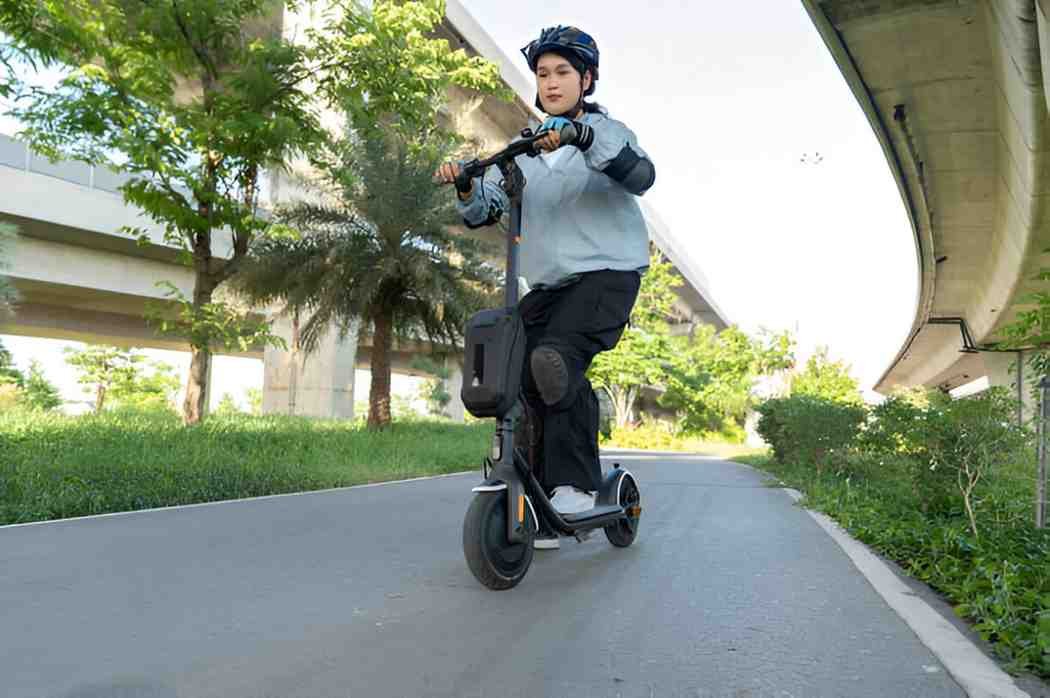Commuting in today’s world often means dealing with traffic, crowded public transportation, and long walks. A solution that’s gaining popularity is the electric scooter. Not only do electric scooters offer a faster and more efficient way to travel, but they also make the commute more enjoyable. In this guide, I will walk you through everything you need to know to buy the best electric scooter for commuting. From key features to consider, how to compare different models, and how to pick the right one for your needs, this article has you covered.
Table of Contents
Why Consider an Electric Scooter for Commuting?
Before we dive into how to choose the best scooter, let’s first address why electric scooters are a great choice for commuting. If you live in a city or an area with heavy traffic, a scooter can help you navigate through traffic faster than a car. It’s also an environmentally friendly alternative to gas-powered vehicles and reduces your carbon footprint.
Electric scooters are compact, meaning they can be stored easily at home or in your office, saving space. Most importantly, they are cost-effective. When you factor in the savings on fuel, parking, and public transport, the scooter pays for itself in the long run.
Key Features to Look For in an Electric Scooter
When selecting an electric scooter for commuting, there are several important factors to consider. These will help ensure that you make the right investment, based on your specific needs.
1. Battery Life and Range
The range of an electric scooter refers to the distance it can travel on a single charge. If your daily commute is long, you’ll need a scooter with a large battery that can cover more miles. A scooter with a range of 15-25 miles is ideal for most commuters. However, if you only need it for short distances, a smaller range might be sufficient.
Battery Life Comparison Table
| Scooter Model | Battery Capacity (Wh) | Max Range (Miles) | Charging Time (Hours) |
|---|---|---|---|
| Model A | 250Wh | 15 | 3 |
| Model B | 500Wh | 25 | 5 |
| Model C | 350Wh | 20 | 4 |
2. Speed
The average top speed of electric scooters typically ranges from 15-20 mph. For city commuting, a top speed of 15 mph is often sufficient to navigate through urban areas safely. However, if you need to cover longer distances or prefer faster travel, opt for scooters that can reach 20 mph.
3. Weight and Portability
Portability is a key factor, especially if you need to carry your scooter into buildings, onto public transportation, or store it when not in use. Lighter scooters (around 25-30 pounds) are easier to carry, while heavier ones offer more stability and can handle rougher terrain.
For those with limited storage space, look for scooters with a folding design. Folding scooters are easier to store in apartments, offices, or even in the trunk of a car.
4. Comfort and Suspension
When commuting, you’ll likely be riding over uneven surfaces or potholes. A scooter with good suspension can absorb the shock and provide a smoother ride. Look for models that offer front and rear suspension for optimal comfort. Additionally, wider, air-filled tires can improve comfort and traction.
5. Braking System
Safety is essential, especially when riding through busy streets. Most electric scooters come with either a drum brake or disc brake system, but some high-end models also feature regenerative braking. This system recovers energy from braking and uses it to charge the battery.
Braking performance can make a big difference in your safety, especially when you need to stop quickly. Always check the type of braking system before purchasing.
6. Build Quality and Durability
Your scooter needs to be sturdy and durable enough to withstand daily use, especially if you ride it in challenging weather conditions. Look for scooters made from materials like aluminum or steel. These materials offer a good balance of weight and strength.
7. Price and Value for Money
Electric scooters can range from $200 to over $1,000. While it’s tempting to choose the cheapest option, remember that quality often correlates with price. Budget models might not have the same features or durability as mid- to high-end models, so it’s essential to balance cost with features.
8. Additional Features
Many scooters come with extra features like built-in lights for visibility at night, a smartphone app for tracking your ride, or a digital display to show your speed, battery life, and distance. While these features are nice to have, they might not be essential for your needs.
Comparing Top Electric Scooters for Commuting
To help you make a more informed decision, here’s a comparison of some of the top electric scooters available in the market today. Each model is designed with specific commuting needs in mind.
Scooter Comparison Table
| Feature | Model A | Model B | Model C |
|---|---|---|---|
| Top Speed | 15 mph | 20 mph | 18 mph |
| Range | 15 miles | 25 miles | 20 miles |
| Weight | 26 lbs | 30 lbs | 29 lbs |
| Braking System | Drum Brake | Disc Brake | Regenerative + Disc Brake |
| Suspension | None | Front & Rear | Front Suspension |
| Price | $350 | $650 | $450 |
Model A: Best for Short Commuters
If your commute is under 5 miles, Model A could be the right fit. It’s lightweight, affordable, and gets the job done without unnecessary features. With a 15-mile range, it’s perfect for shorter commutes, and the absence of suspension doesn’t pose a major issue for smooth city roads.
Model B: Best for Long Distances
For those who need to travel longer distances (over 10 miles), Model B is a solid choice. With a 25-mile range and a top speed of 20 mph, it’s built for speed and distance. The front and rear suspension ensure a smooth ride even on bumpy roads, and the disc brakes provide excellent stopping power.
Model C: Best for Comfort and Performance
If comfort is your priority, Model C offers the best balance of features. With regenerative braking, front suspension, and a range of 20 miles, this scooter is suitable for medium to long commutes. The slightly lower top speed (18 mph) makes it less suited for long-distance highway commutes, but it’s ideal for urban environments.
Important Safety Tips for Commuting on an Electric Scooter
Safety is crucial when commuting by electric scooter. Here are a few tips to keep in mind:
- Wear a helmet: This is the most important piece of safety equipment.
- Follow traffic rules: Ride your scooter like you would a bicycle. Adhere to traffic signals and avoid riding on sidewalks.
- Be visible: Equip your scooter with front and rear lights, and consider wearing reflective clothing for added visibility.
- Check the weather: Avoid riding in harsh weather conditions like rain or snow, as wet surfaces can make riding dangerous.
Maintenance Tips to Extend the Life of Your Electric Scooter
To get the most out of your electric scooter, regular maintenance is important. Here are a few tips to keep your scooter running smoothly:
- Check tire pressure: Low tire pressure can affect the scooter’s performance and make riding uncomfortable.
- Keep it clean: Regularly wipe down your scooter to prevent dirt and debris from clogging the mechanisms.
- Charge regularly: Avoid letting the battery run out completely before charging. Charging it frequently can prolong its life.
- Inspect the brakes: Make sure the brakes are functioning properly, and replace them when necessary.
Conclusion
Choosing the best electric scooter for commuting depends on your specific needs, such as the distance you travel, the terrain you ride on, and your budget. It’s essential to weigh the pros and cons of each model to find the one that fits your lifestyle. By considering factors like battery life, speed, weight, and safety features, you’ll be able to select a scooter that makes your daily commute a breeze.
In the end, an electric scooter can be an efficient, eco-friendly, and cost-effective way to commute. Whether you’re a short-distance commuter or someone who travels longer routes, there’s a scooter out there for you. Take your time, evaluate your needs, and choose the one that makes your ride smooth and enjoyable. Happy commuting!





